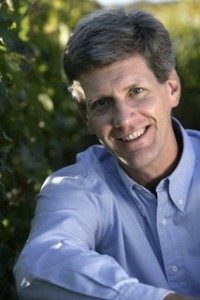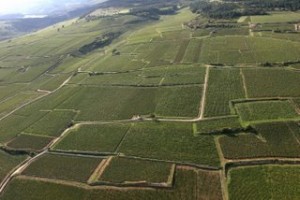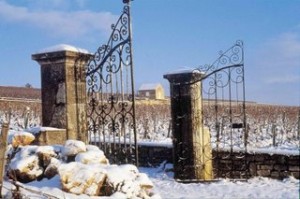An interview with … Philippe Drouhin of Joseph Drouhin

Philippe Drouhin
During a visit in July 2010, I visited Burgundy business Joseph Drouhin, at their Beaune offices, where I met with fourth generation, Philippe Drouhin, the estates manager, who runs the domaine properties and negociant business along with his three younger siblings Véronique, the chief winemaker, Laurent, their director in the USA, and Frédéric, the company’s president.
The domaine part of the business owns more than 70 hectares in the Côte de Nuits, Côte de Beaune, Côte Chalonnaise and Chablis, making it one of the largest domaines in Burgundy. It accounts for around 40% of Drouhin’s total business.
And though it isn’t displayed prominently, in fact it isn’t displayed at all, on the label, all the domaine vineyards are certified organic. Philippe explains why, after more than 20 years of working in an organic way, he only latterly sought certification.
He said “In 1988, fresh out of viticultural school, I was convinced the synthetic way of managing vineyards was risky and might be a dead end. Everything we were told about diseases was warnings of resistance to downy mildew etc., withholding periods because of residues [on the fruit], and issues of yeast.”
“In 1988, yellow and red mites were a big problem. The beginning of the discovery for me was Typhlodromus pyri, a small mite that eats the other mites.” Vignerons had been using chemicals since the 1960s which also killed the T. pyri, but, he said “the new chemicals [at the time] had to avoid damaging the pyri” because of the work it did in countering red and yellow mites. Now”, Philippe added “no-one now uses chemicals against yellow and red mite.
“New chemicals come on the market on every three years, but we know nothing about the long term effects, and we have no knowledge about [the consequences of] mixing the various chemicals.” Chemicals tend to be targeted against single issues so combining chemicals against e.g. downy mildew, powdery mildew and mites all together creates an unknown situation.

Clos des Mouches
Philippe continued “so it was obvious for me to use organic chemicals such as copper and sulphur. It was still risky but it was the way to go – for the safety of people working in vineyards, and for living organisms we did not want to kill with the new chemicals. I decided we should go the organic way.
“I was getting interested in soils at this time. It was obvious that terroir is everything. Terroir, for me only [exists] if the soil is functioning well.” He said “to manage the soil using weed killers was like genocide; you kill some parts of the soil population completely. And if I use a plough, it’s like an earthquake. Ploughing decreases microbial activity, but it does come back soon after you stop. The best [solution] was to have grass, which is difficult in the Côte d’Or.”
Not that Philippe was deterred. “I started in difficult and easy places. Chorey-les-Beaune was difficult because it is flat and humid; Clos des Mouches and Corton-Charlemagne were easy. And 2 or 3 years after this, I expanded it to the whole Côte d’Or estate, then into Chablis.”
Now, Philippe said “it’s easier to manage the vineyards organically than with synthetic chemicals. For example, there are re-entry delays with chemicals, up to 48 hours for synthetic chemicals, but only 6 hours for organic applications.”
Having worked to organic principles for so many years, and adopted some biodynamic techniques over the past 13 years, Philippe said “I felt in 2006 it was necessary to ask for certification. It changed nothing but the paperwork and the expense. It was to be able to prove we are actually doing it. We’ve never used it commercially. Though now it becomes a selling point for some estates, and there was a tendency for some estates to let people think they were organic when they weren’t.”
Certification gets around that unclear situation, though Philippe highlighted one of the weakness of organic certification “with the organic approach, the impact on the environment is in the vineyards rather than the winery. There is still no definition of organic wine.” In fact this is something the EU reviewed recently but member nations could not agree on a definition and process for the making of organic wine, so it remains wine ‘produced from organically grown grapes’. Philippe emphasised “we need to have [a definition], to certify that the process in the winery didn’t lead to a contamination of organic wine.“

Clos des Mouches
If anyone is looking for a checklist of things to do for an environmentally sympathetic viticulture, or expanded biodiversity, Philippe was not particularly encouraging. He said “I don’t have a structured plan as result of sophisticated study. There are things we’ve done that keep diversity in the landscape such as planting trees, addressing erosion. For example, managing grass is critical to the flow of water. In Chablis, it is common to have long slopes, so by cutting rows and having a bank [across] with tough grass, we can create a stop that cuts the speed of water and retains some earth.
“We’re going to have three or four beehives in the premier cru vineyard Clos des Mouches. In old French it was ‘mouche à miel’ [so honey flies, as in bees]. Bees are having problems surviving, so we decided to introduce them. In the past three weeks, we’re waiting for a population of bees to be caught.”
Philippe was cautious though “within the vineyards, there is not much diversity. We don’t know how they will live. In Clos des Mouches we have small patches of grass, of trees, of flowers, but maybe it is not enough for them, though they can fetch food from five miles away.” He added “It is part of biodiversity, its good to help in modest way.”
Did Philippe ever encounter any resistance from his siblings for his ecological approach? He said not, but “my father had an opinion. He dealt with the vineyards like I’m doing today. He said he was not in favour or against, but it made sense that I try it. He knew there was some risk, so he did not want me to go too fast, but that was not my intention. He said to me the right way was to abandon all the fertilisers because he felt the vineyards were looking too good, too vigorous, too green, and the wines were not so good.”
Overall he said “I suspect that the quality has increased, but I have no proof. But it’s obvious for me that organics and biodynamics have an impact on the wine, the terroir expression, the quality.” And, rather modestly, he added “all [my siblings] are happy with the increase in quality of the wines … at the same time the vineyards have got older, the weather has got warmer”, suggesting other factors may also be at play.
My research visit to Burgundy in July 2010 was sponsored by the BIVB



